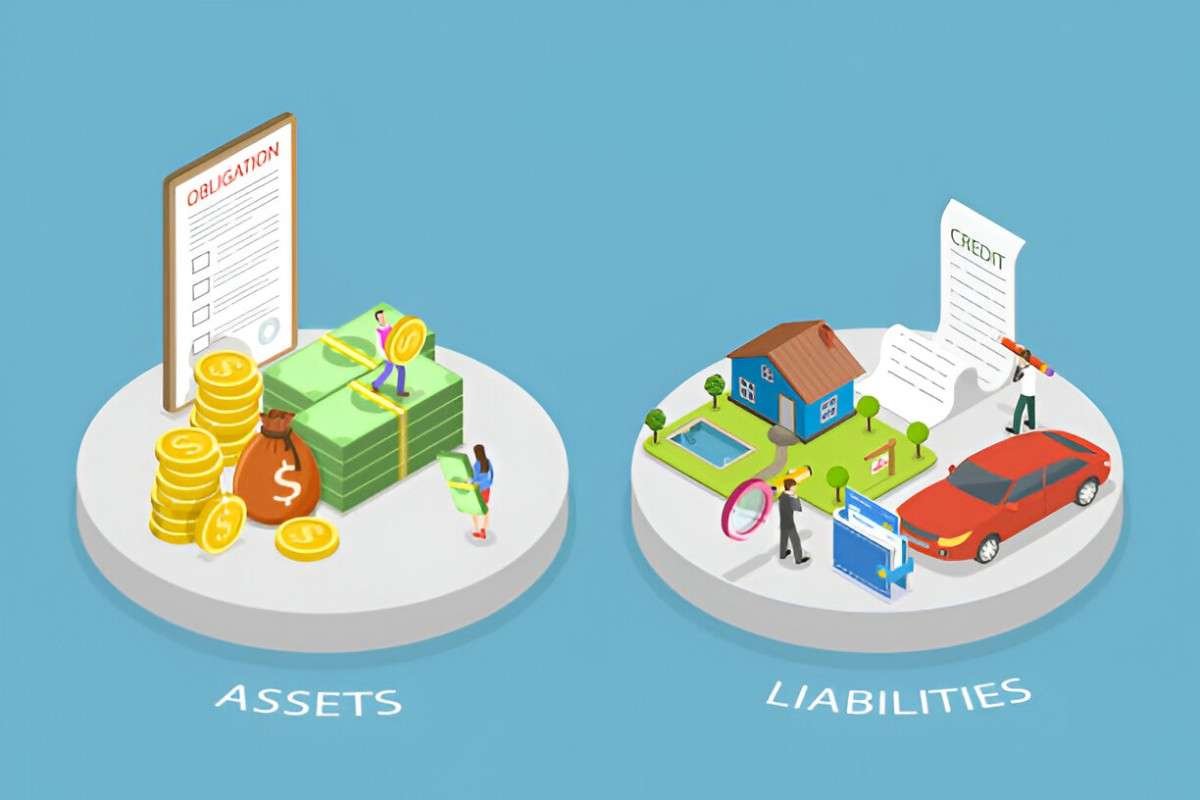I find that the most powerful financial concepts are often the simplest ones. In the world of mutual funds, one equation reigns supreme. It is the fundamental law that dictates the price of every share you buy and sell. That equation is Assets minus Liabilities. For a mutual fund, this simple calculation does not just equal a number. It equals the Net Asset Value, or NAV. It is the very heart of the fund, the pulse that beats at the close of every market day. Understanding this is not just academic. It is essential for any investor who wants to know exactly what they own.
Table of Contents
Breaking Down the Equation: More Than Just Math
Let’s dissect this equation piece by piece. It seems straightforward, but each component tells a story about the fund’s health and composition.
Assets: This is the total value of everything the mutual fund owns. Think of it as the entire portfolio.
- Market Value of Securities: This is the main event. It is the current worth of all the stocks, bonds, and other holdings within the fund. If a fund owns 1,000 shares of Company X, and the stock is trading at \$150 per share, the value of that holding is 1,000 \times \$150 = \$150,000. The fund does this for every single security it holds.
- Cash and Cash Equivalents: This includes any cash waiting to be invested or money market holdings.
- Accrued Dividends and Interest: This is income the fund has earned but has not yet received.
Liabilities: These are the fund’s obligations—what it owes.
- Accrued Management Fees: The operating fees owed to the investment management company.
- Other Accrued Expenses: Costs for things like legal, auditing, or administrative services.
- Money Borrowed: Some funds use leverage, meaning they borrow money to invest. That debt is a liability.
So, when we say Assets minus Liabilities, we are calculating the fund’s true net worth after all bills are paid.
The Final Step: Calculating the Per-Share Price
The result of Assets minus Liabilities gives us the fund’s total net assets. But you do not own the whole fund; you own shares of it. This is where we find the Net Asset Value per share.
The formula is elegant in its simplicity:
NAV = \frac{Total \; Assets - Total \; Liabilities}{Total \; Shares \; Outstanding}The Total Shares Outstanding is the number of shares held by all investors. This number fluctuates daily as investors buy into or sell out of the fund.
Let’s make this real with an example. Imagine the “XYZ Growth Fund.”
- Total Assets: \$500,000,000 (value of all its stocks + cash)
- Total Liabilities: \$5,000,000 (accrued fees and expenses)
- Total Shares Outstanding: 20,000,000
First, we find the net assets: \$500,000,000 - \$5,000,000 = \$495,000,000
Then, we calculate the NAV:
NAV = \frac{\$495,000,000}{20,000,000} = \$24.75This \$24.75 is the price per share of the XYZ Growth Fund at the close of that trading day. If you want to buy a share, this is what you pay. If you want to sell a share, this is what you receive.
Why the NAV Matters to You, the Investor
The NAV is far more than a price tag. It is a crucial tool for transparency and fair dealing.
- It Ensures Fair Pricing: Because the NAV is calculated once at the end of each trading day, every investor gets the same price for their buy or sell orders placed that day. It prevents rapid traders from gaining an advantage over long-term holders.
- It Reflects True Performance: The daily change in NAV is the primary measure of a fund’s performance. If a fund’s NAV goes from \$20 to \$21 over a year, it has achieved a 5% return, not accounting for distributions.
- It is Not a Measure of “Cheapness” or “Expensiveness”: This is a critical point I stress to my clients. A fund with a \$100 NAV is not “more expensive” than a fund with a \$10 NAV. The share price is arbitrary. What matters is the performance of the underlying assets. A $10 share that falls to $9 is a worse investment than a $100 share that rises to $110.
The Impact of Distributions: A Temporary Reset
A common point of confusion occurs when a fund makes a distribution of dividends or capital gains. When this happens, the NAV drops by the exact amount of the distribution per share.
Why? Because the fund is paying out cash (an asset) to its shareholders. The value of the fund’s assets decreases by the total amount of the distribution.
If our XYZ Fund with a \$24.75 NAV pays a \$0.75 per share distribution, its new NAV will be \$24.00. The investor who received the \$0.75 distribution has not lost money. They now own a share worth \$24.00 and have \$0.75 in cash, for a total value of \$24.75. It is a non-event from a total wealth perspective, but it is a crucial accounting function.
A Perspective on What NAV Does Not Tell You
While vital, the NAV has limits. It is a backward-looking measure, telling you the value at the end of the previous day. It does not predict future performance. It also does not tell you about the quality of the fund’s management, its investment strategy, or its risk level. A high NAV could be the result of years of strong performance or simply a fund that rarely issues distributions.
The bottom line is this. The equation ‘Assets – Liabilities’ is the engine of honesty in the mutual fund industry. It translates the complex, daily gyrations of the market into a single, fair price for every investor. When you understand that this simple math equals the NAV, you move from being a passive buyer to an informed owner. You know the precise meaning behind the price of your fund shares, empowering you to make calmer, more confident investment decisions.





